Here at OpenSTEM we have a saying “we have a resource on that” and we have yet to be caught out on that one! It is a festive time of year and if you’re looking for resources reflecting that theme, then here are some suggestions:
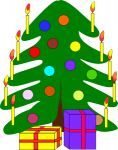 Celebrations in Australia –
Celebrations in Australia –  a resource covering the occasions we celebrate here in Australia
a resource covering the occasions we celebrate here in Australia
Celebrations Around the World – a resource comparing some familiar and some different celebrations around the world
Celebrations in the Past – sometimes students can gain a new approach on the past by seeing how familiar celebrations used to be commemorated. This resource looks at a range of celebrations (including Christmas) and has lots of historic photos and images to help students experience a different perspective.
If you’re looking for activities to keep spirits alive in the final weeks of term, or ways of keeping excited young people entertained, then we have some resources which may help:
 Games from the Past – students can play a variety of games from around the world and through time. Some of these are good for running around in open spaces and some can be done in the classroom. All of the them tie in to themes that students have covered in HASS subjects through the year.
Games from the Past – students can play a variety of games from around the world and through time. Some of these are good for running around in open spaces and some can be done in the classroom. All of the them tie in to themes that students have covered in HASS subjects through the year.
Food in the Past – if you’re looking for ideas for a class party or other celebration, this resource contains recipes for celebratory foods from around the world and through time – students can experience the past through their taste buds!
If you’re looking for stories – Living in the Past and Children In the Past contain tales of fictional children in realistic historic settings around the world, including Australia.
These are just some of our resources that can be used to brighten up the final weeks of the year and keep students engaged. If you have a subscription, now might be a good time to browse through the site checking for new or updated resources or grabbing that resource that you saw earlier and thought looked interesting.
However you celebrate, all of us at OpenSTEM wish you a very Merry Festive Season and a wonderful start to 2018! We look forward to catching up in the New Year!


 Our youngest students in Foundation/Prep/Kindy (
Our youngest students in Foundation/Prep/Kindy ( Slightly older students in Years 1 (
Slightly older students in Years 1 (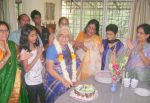 Students in Year 3 (
Students in Year 3 ( Well, the end of term is in sight! End of year reporting is in full swing and the Understanding Our World® activities are designed to keep students engaged whilst minimising requirements for teachers, especially over these critical weeks. The current activities for all year levels are tailored to require minimal teaching, allowing teacher aides and other helpers to assist students while teachers can be free to concentrate on reporting and other requirements. All year levels have now passed the threshold of completing all curriculum material for the year for all HASS subjects as well as Science, so no more formal assessment is needed. The final weeks are focused on fun, whilst carrying the themes covered earlier in the term, and year, forwards, so that the fun enhances the learning, rather than detracting from it.
Well, the end of term is in sight! End of year reporting is in full swing and the Understanding Our World® activities are designed to keep students engaged whilst minimising requirements for teachers, especially over these critical weeks. The current activities for all year levels are tailored to require minimal teaching, allowing teacher aides and other helpers to assist students while teachers can be free to concentrate on reporting and other requirements. All year levels have now passed the threshold of completing all curriculum material for the year for all HASS subjects as well as Science, so no more formal assessment is needed. The final weeks are focused on fun, whilst carrying the themes covered earlier in the term, and year, forwards, so that the fun enhances the learning, rather than detracting from it.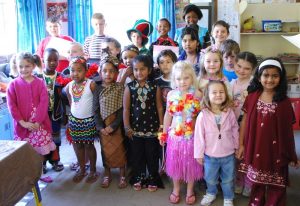 Students in Years 3 (
Students in Years 3 ( The last term of the school year – traditionally far too short and crowded with many events, both at and outside of school. OpenSTEM’s® Understanding Our World® program for HASS + Science ensures that not only are the students kept engaged with interesting material, but that teachers can relax, knowing that all curriculum-relevant material is covered by the middle of the term, ensuring enough time for marking and preparation of reports. Furthermore, following the OpenSTEM® Understanding Our World® program across an entire year guarantees that your students have met the curriculum requirements for all of History, Geography, Civics and Citizenship, Economics and Business (HASS) and Science for the whole year, matched to their year-level, even in multi-year level classes. This term our youngest students are reviewing some of the material covered earlier in the year and then preparing for a Play (with props and dress-ups) matched to this material. Students in Years 1 to 3 examine modern families around the world and then prepare a short presentation or dramatisation based on what they have learned. Older students are studying migrants and cultural identity and using the information to plan an end-of-year celebration of cultural diversity. These students also hold a class election, with preferential voting.
The last term of the school year – traditionally far too short and crowded with many events, both at and outside of school. OpenSTEM’s® Understanding Our World® program for HASS + Science ensures that not only are the students kept engaged with interesting material, but that teachers can relax, knowing that all curriculum-relevant material is covered by the middle of the term, ensuring enough time for marking and preparation of reports. Furthermore, following the OpenSTEM® Understanding Our World® program across an entire year guarantees that your students have met the curriculum requirements for all of History, Geography, Civics and Citizenship, Economics and Business (HASS) and Science for the whole year, matched to their year-level, even in multi-year level classes. This term our youngest students are reviewing some of the material covered earlier in the year and then preparing for a Play (with props and dress-ups) matched to this material. Students in Years 1 to 3 examine modern families around the world and then prepare a short presentation or dramatisation based on what they have learned. Older students are studying migrants and cultural identity and using the information to plan an end-of-year celebration of cultural diversity. These students also hold a class election, with preferential voting.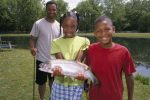 Our youngest students – those in Foundation/Prep/Kindy (
Our youngest students – those in Foundation/Prep/Kindy (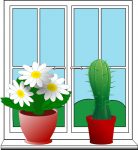 Students in Years 3 (
Students in Years 3 (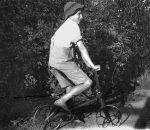 Students in Foundation/Prep/Kindy (
Students in Foundation/Prep/Kindy (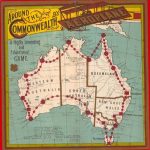 Older students are expected to analyse their Data in increasing detail relevant to their year-level, as well as listing sources in the Method section of their
Older students are expected to analyse their Data in increasing detail relevant to their year-level, as well as listing sources in the Method section of their
Aunt Madge's Suitcase was a really fun activity! The children were really interested in all the places she travelled to,…
Indi Alford, Teacher